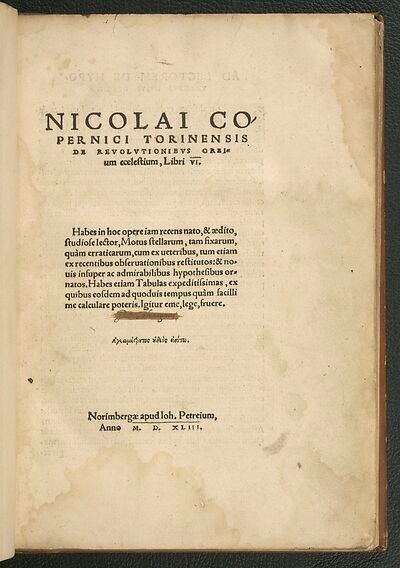Title page of Nicolaus Copernicus's work 'De Revolutionibus Orbium Coelestium', published in Nuremberg in 1543.
In the mid-16th century, the Polish astronomer Nicolaus Copernicus showed that the old model of the universe was wrong. According to Copernicus, the sun and not the Earth is the centre of our solar system. Ancient philosophers observed the night skies and did mathematical calculations. They concluded that the Sun and the planets revolve around the Earth. Around the year 1515, Copernicus made several detailed observations of Mars, Saturn and the Sun which prompted him to revise the long-established view. He concluded that the Sun is fixed and that the planets, including Earth, revolve around the sun. Copernicus' discovery was very controversial. It meant that mathematicians and astronomers had been wrong for more than 2,000 years. If Earth is not the centre of the solar system, then human beings cannot be at the centre of the universe. This meant a challenge to the teachings of the Christian Church, too. Copernicus was a very devout Catholic and did not publish his discovery until the end of his life. His book, entitled 'Of the revolution of the heavenly spheres', hailed a revolution in how we view our world.

